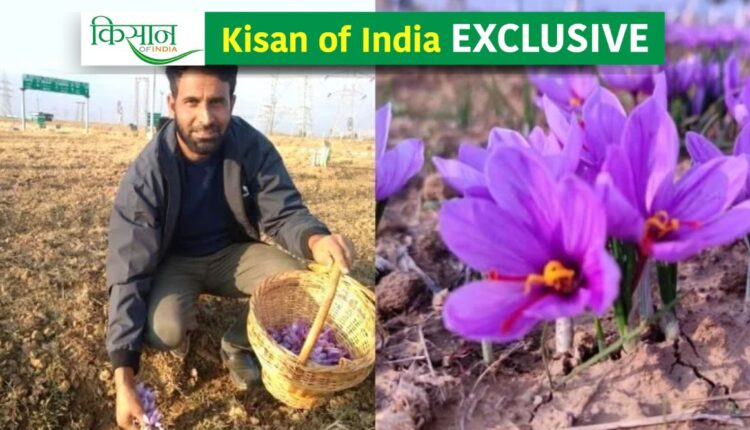Saffron Cultivation: Extracting from flower is hard and delicate
Kashmir's Irshad Ahmed Dar set an example
Saffron is the most expensive, most colourful, and aromatic spice in the world. This is such a wonderful gift of nature that is unmatched. India is fortunate in the case of saffron, also known as saffron or zafran, because the best variety is produced here in the Kashmir province. The special thing is that as soon as October 21 comes every year, in the Pampore area here, saffron flowers with purple coloured leaves start blooming out of the bulb. The same happened this time too. Every time by the beginning of November, the saffron crop is at full maturity. The reason for this is that these days the weather which is favourable for saffron here has a special balance of temperature and moisture. This time after the recent rains, it is expected that after a week, the land on the Jammu-Srinagar National Highway will be covered with purple colour for miles, but this charisma of nature for a few days has not been seen in this form for years. Saffron farmers have to put in a lot of hard work and tremendous skill to maintain the season. When there is good coordination between nature, farmer and skill, then the saffron crop, which competes with gold in terms of price and beauty, also brightens the fortune of the farmer.

90% of saffron is produced in Pampore of Pulwama
In India, 90 percent of the production of saffron is in the Pampore area of Pulwama only, and the ancestors of the present farmers have been cultivating it here. Once such a time had come that saffron farmers were shying away from growing such an expensive commodity. Labour is more, the crop is less, along with its cost, the profit is also less. Well, the government woke up and intervened. Hundreds of crores of saffron missions made in the decade of 2010 could not give that much effective results due to various reasons, but it has definitely done a great job of awakening the entire system related to saffron in India and Jammu and Kashmir. Those who count the failures of the mission also praise the plan for at least one achievement in this direction. From growing saffron himself to taking a personal interest in its promotion, Irshad Ahmed Dar and farmers like him are now hopeful about the future of saffron. Irshad Ahmed Dar is a resident of Patalbagh village of Pulwama, which is near Pampore, the area where saffron is cultivated the most. Irshad is being mentioned here because when agriculture officers discuss saffron here, Irshad’s name automatically comes up in the conversation.
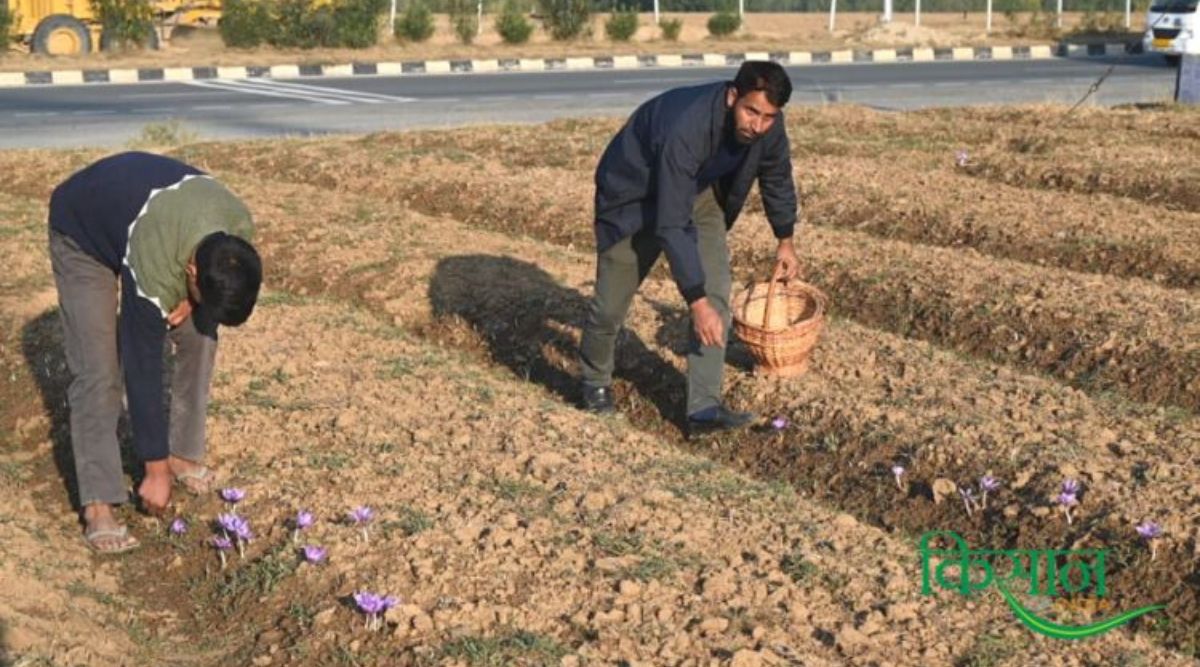
Extracting saffron from flowers is a laborious and delicate task
In fact, the specialty of 34-year-old Irshad is that he is well-versed in saffron farming and the nuances of this farming, which has been going on for generations, he does such things which would take him to the level above that of a farmer and agronomist. They met him at his farm where he and his family had come to pluck the saffron flowers grown this season. The most delicate part of these soft flowers i.e. stigma (Stigma) is taken care of the most because saffron is there only. In Kashmir it is called kung and the saffron flower is called kungposh. After drying, this kung is called saffron, but the work of drying the kung after separating the parts of the flower is done inside the houses of the farmers. That’s why these days the houses of saffron farmers keep on smelling of fragrance. The same scene was seen at Irshad’s house as well. The youngest of the family, his son barely three years old, wife and elderly mother are engaged in this work.
Why did the Chief Agriculture Officer of Pulwama district Iqbal Khan mention Irshad Ahmad Dar a few days back when there are many farmers who grow saffron here, but the process of solving this mystery started only after a while.
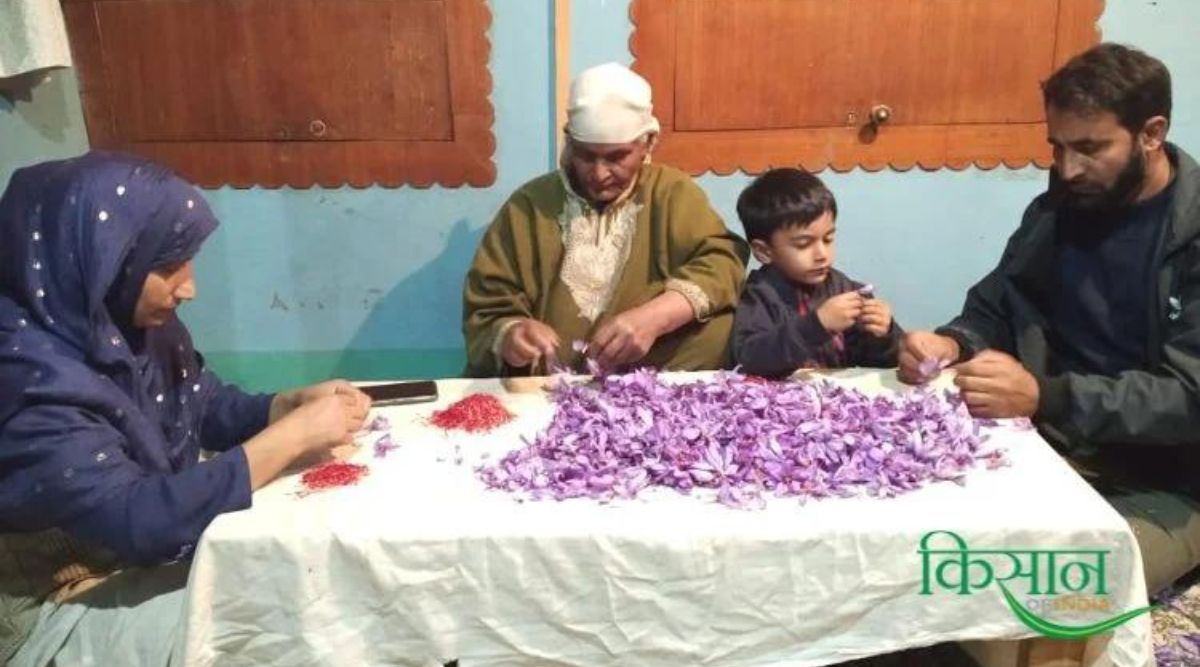
Spices are grown by organic farming
Of the nearly 80 kanals of Irshad Ahmed’s joint family land, about 40 per cent is devoted to saffron cultivation. Paddy in 30 kanals of his land, vegetables and spices in 10 kanals and commercial timber trees like willow, poplar in the rest. The specialty is that Irshad believes in organic farming. They claim that 100% organic fertilizers and organic pesticides are used in their products. Certainly did not study science. He has done BA from Indira Gandhi Open University, but he has come to know the nuances of farming so much and keeps himself updated so much that he has developed the ability to have a long discussion with any agricultural expert.
Out of his 12 kanals of land, he has sown saffron in 8 kanals and Kashmiri red long forest chillies, Kashmiri red garlic, mustard and shallot (a type of onion) in the remaining 4 kanals. They do not plant one crop continuously in their fields. Keep changing them. It is said that crop rotation is necessary. It is beneficial from commercial point of view and also for soil fertility. Let us give the example of peas planted last year. It is said that the amount of nitrogen in the soil increases naturally due to the pea crop, so he planted pulses as the next crop at such a place. There was no need to put urea, DAP. Adding vermicompost or bio-fertilizer is enough, but it also has the advantage that there is no need of pesticides. Because nowadays the prices of chemical-rich medicines and fertilizers are increasing so much that their use increases the cost and reduces the profit.
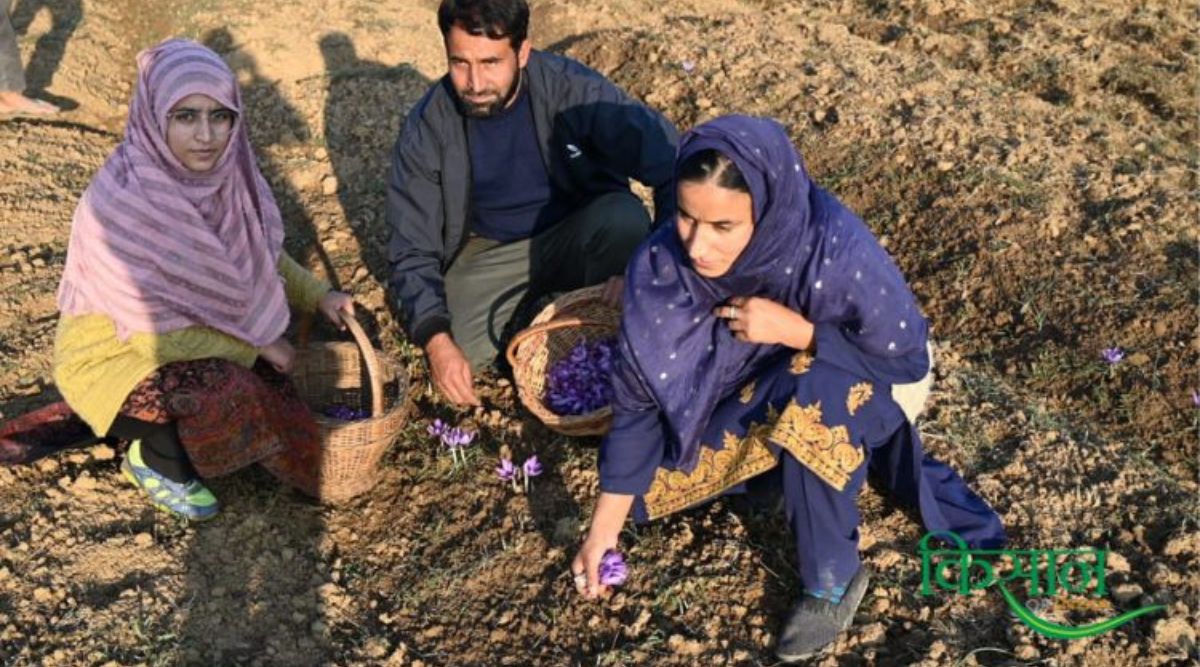
Use of technology in natural farming
There is another advantage of planting different crops. If there is a decrease in the price of one crop, then the other crop balances it. That’s why profit may be less but loss can be avoided. Irshad strongly believes in natural farming but is strongly in favour of human intervention and use of technology in some cases. For example, they tell that they do the work of separating the stigma of saffron flower or drying it naturally at home but selling it through the spice park developed by the government. More than 30 to 40 percent prices are available here. Actually, there is GI tagging on the packing of saffron supplied for sale from here, which is considered a guarantee of purity. That’s why the price of this saffron is high. As far as Irshad’s attachment to saffron is concerned, it can be gauged from the fact that he gives free seeds to promote saffron cultivation and increase awareness among people. In 2018, at the Baramulla Degree College in Kashmir, he not only gave seeds to the students as a trial, but also gave them a week’s training. This project was given to him by the Botany Department there.
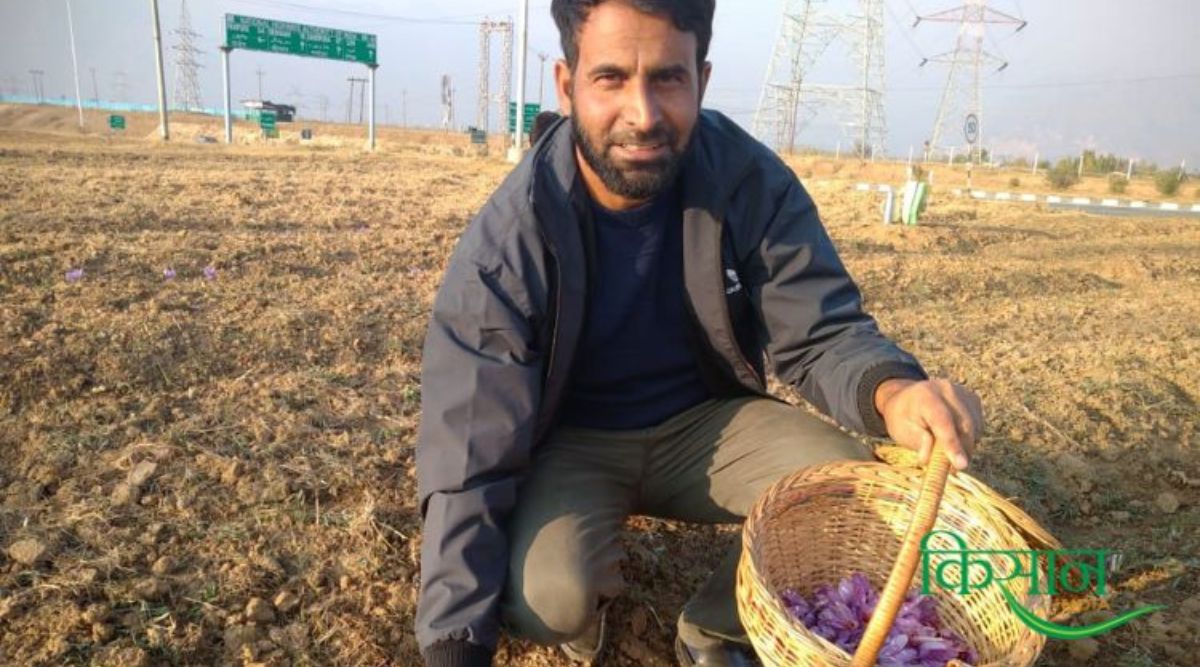
Through social media, the youth were turned towards agriculture
From cultivating other types of crops to promoting dairy farming, they keep doing something or the other at their level. Irshad says that he has so far helped 31 youths to become successful farmers by encouraging them for this type of work. There are some girls among them. How is it possible to collect different information for all this and to reach and stay in touch with such people while running a shop selling fertilizers along with farming and cow rearing? Irshad Ahmed Dar has the answer – technology and social media. Started YouTube channel with Facebook page named Agriculture Organic Farming Kashmir and also created WhatsApp group.
According to the needs of different categories of people, a total of 8 groups have been formed through which they are connected with about 2000 people. There is even a group in which the Vice Chancellor and Director of the University and even scientists are involved. Through these groups, Irshad shares information on topics like problems, plans and new technology etc. Many farmers also share their experiences, which others take advantage of, while some experts also suggest changes in new and old methods to be adopted in farming, which increases the quality.
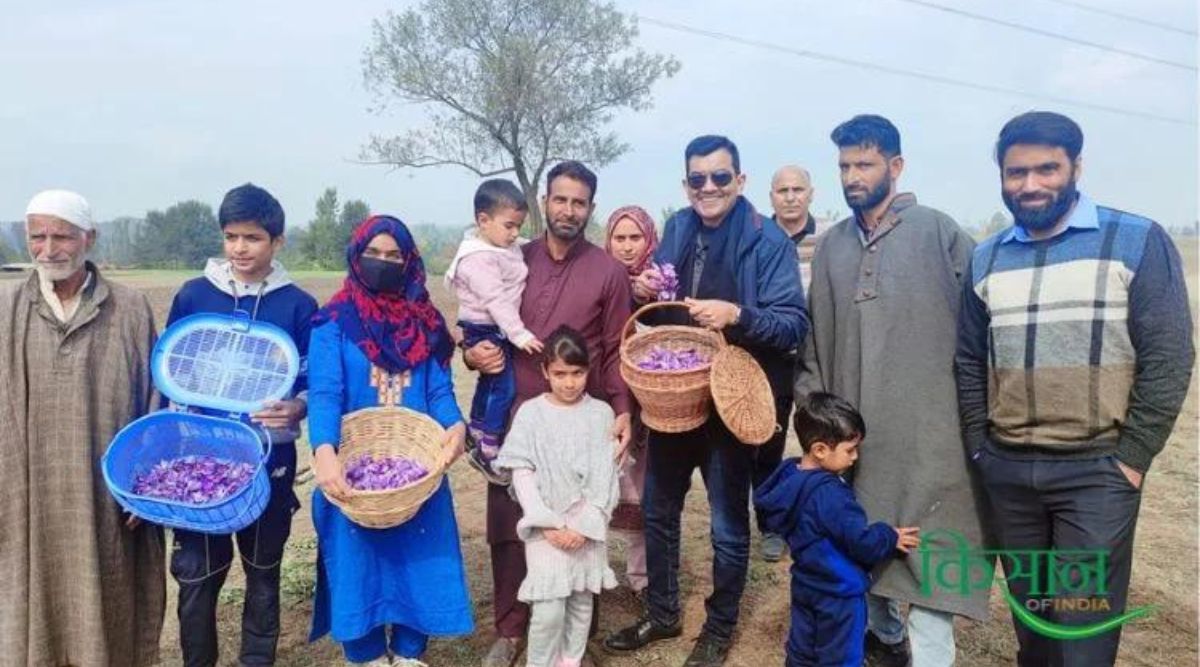
Made FPO of educated farmers
Irshad Ahmed Dar, who has been helping the farmers in various ways, has now formed a farmers production organization as well. This is a scheme of NABARD in which farmers produce by forming a company. Irshad has so far added 120 members to it. It is said with pride that all of these members are youth. The least educated member is a 12th pass youth, there are many graduates and post graduates and there are also PhD holders. Soon the work will be started after formally opening the office and opening the bank account. This FPO will help the farmers from growing crops to packing, transporting and selling the products.
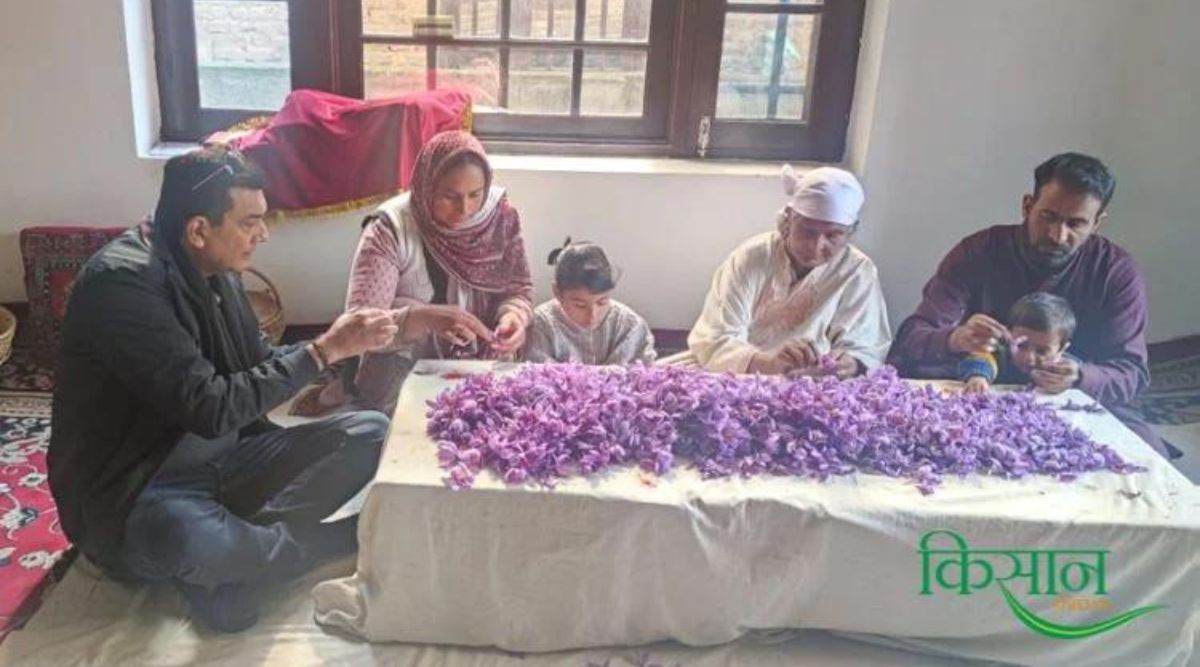
Will launch our products with crop preparation
Irshad Ahmed Dar, an advocate of progress, choice and innovation, is working on a plan to make products from his crop as well. It is said that this time the price of garlic crop was very low. Now instead of the crop, he has planned to make garlic paste and sell it. Garlic paste is in great demand in urban areas. Similarly, they are also working on a plan to mix Kashmiri red chilli paste in saffron water and sell it after drying it in the form of small pills/cakes. This spice made by mixing this saffron and chili is called ‘var’ in Kashmiri. It is used in cooking traditional Kashmiri dishes.
Also Read: Maduva-Jhunara are the solution to barren farming
Contact us – If farmers want to share any valuable information or experiences related to farming, they can connect with us via phone or whatsapp at 9599273766 or you can write to us at “[email protected]”. Through Kisan of India, we will convey your message to the people, because we believe that if the farmers are advanced then the country is happy.
You can connect with Kisan of India on Facebook, Twitter, and Whatsapp and Subscribe to our YouTube channel.



